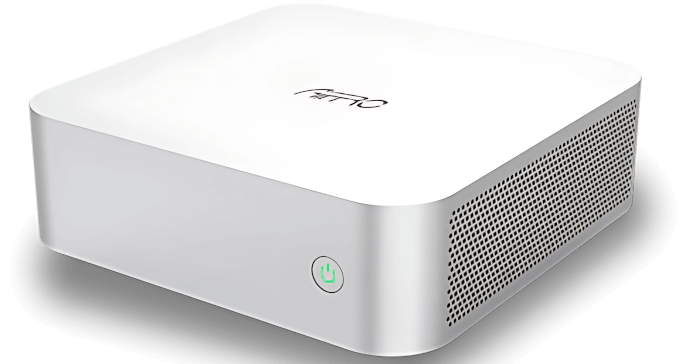Getting Started
The K100 does not come with any pre-installed operating system. I have a bootable USB drive (made with the open source Ventoy toool) which stores a whole bunch of Linux distributions (ISOs). It makes it so easy to install a variety of operating systems from a single USB drive.
I installed Ubuntu Desktop 25.04 on the review unit, if only because I want to see what it’s like running a desktop operating system, run a set of benchmarks, and perform other general testing. For later articles in the series I’ll explore using the NAS with other operating systems including TrueNAS Community Edition, Proxmox, and openmediavault.
I’m not going to delve into the installation process for Ubuntu. It proceeds like installing it on any machine. In fact the K100 can substitute as a desktop computer. Its 8GB of RAM is sufficient for general desktop use, and the N100 processor is often found in budget mini PCs. The machine only has a single HDMI port mind. While it’s lacking Bluetooth and WiFi they can be added via USB if needed.
Initial Impressions
Network attached storage is the most versatile way to store data, but that’s just one of the many benefits of buying a NAS device. NAS devices are perfect for content creation, personal cloud storage, or acting as a data backup repository.
I’ve mostly limited by initial testing using the machine as a backup server. In Ubuntu, I installed Backrest, a web-accessible backup solution built on top of restic. Backrest provides a WebUI which wraps the restic CLI and makes it easy to create repos, browse snapshots, and restore files. Additionally, Backrest can run in the background and schedule snapshots and orchestrate repo health operations. The machine works well as a dedicated backup machine.
There are 3 mode settings available in the BIOS: Quiet mode, normal mode, and performance mode. The default is normal mode.
With the quiet mode, the fan runs at a lower setting but you’ll get lower performance. In this mode the N100’s clock frequency is limited to 1600-1700 MHz (1500 MHz with power save governor). Even on a Summer’s day with room temperature of 24C, CPU core temperatures only climb to 42C when the CPU is fully stressed.
With the normal mode, CPU frequency maxes out at 2200-2300 MHz under balanced/performance governor, 1500 Mhz under power save governor. Only with the performance mode set in the BIOS do you get the maximum clock frequencies you’d expect from the N100. The machine stays very cool even under full load.
For most users, normal mode will be fine. But if you do a lot of transcoding or run other apps that are CPU intensive, the performance mode is an option.
With a NAS some fan noise is to be expected. You need to keep the CPU and NVMes cool. The K100 is quiet when idling (even on the performance mode) but it’s audible from 1 metre. I wouldn’t want the K100 running 24/7 in a bedroom where someone sleeps. But bear in mind that the machine’s overall noise is far less obtrusive than most NAS devices given SSDs are silent. My other NAS drives are much noisier by comparison in part because they include 7200 RPM mechanical disks (as well as SSDs) and the mechanical disks make quite a racket when accessing.
Next page: Page 3 – Interrogation of the System
Pages in this article:
Page 1 – Introduction and Design
Page 2 – Getting Started and Initial Impressions
Page 3 – Interrogation of the System
Complete list of articles in this series:
| Aiffro K100 All-SSD NAS | |
|---|---|
| Introduction | Introduction to the series and interrogation of the Aiffro K100 All-SSD NAS |
| Benchmarks | Benchmarking the Aiffro K100 All-SSD NAS |
| Power | I compare the Aiffro K100's power consumption to other machines |
